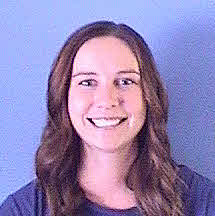Resident Supervision
The Residency Supervision Area is designed to assist hospitals and clinics with the protocols outlined for specific duties residents and fellows can perform. These guidelines are determined by the faculty of the University of Tennessee Health Science Center. Any questions about certain procedures not listed should be addressed to the faculty and not decided by the resident or fellow.
A credentialed and privileged attending physician ultimately provides supervision or oversight of each resident's patient care activities. Direct supervision by a qualified attending physician is required in the OR/Delivery Room or for non-routine invasive procedures like Cardiac Cath, Endoscopy, and Interventional Radiology. The standards for resident supervision in patient care settings are described in GME Policy #410.

Bay, Anna Paige Horner - PGY - 2
Department of OB/GYN
Resident Supervision
All PGY1 OB/GYN residents are supervised either directly or indirectly with the supervisor available to provide direct supervision.
PGY 2, 3, or 4 OB/GYN trainees can perform the procedures listed below with indirect supervision:
|
Differential Diagnosis: |
PGY2 |
PGY3 |
PGY4 |
|
1. Clinical history |
X |
X |
X |
|
2. Physical examination |
X |
X |
X |
|
3. Bimanual and speculum pelvic examination |
X |
X |
X |
|
4. Pap smear |
X |
X |
X |
|
5. Interpretation of laboratory studies |
X |
X |
X |
|
|
|
|
|
|
Gynecologic Procedures: |
PGY2 |
PGY3 |
PGY4 |
|
1. Endometrial biopsy |
X |
X |
X |
|
2. Wet prep analysis |
X |
X |
X |
|
3. Cervical biopsy |
X |
X |
X |
|
4. Vulvar biopsy |
X |
X |
X |
|
5. Incision and drainage of Bartholin/vulvar abscess |
X |
X |
X |
|
6. Suture repair of vulvar/vaginal laceration |
X |
X |
X |
|
7. Culdocentesis |
X |
X |
|
|
8. Wound debridement |
X |
X |
X |
|
9. Bladder catheterization |
X |
X |
X |
|
|
|
|
|
|
Obstetric Procedures: |
PGY2 |
PGY3 |
PGY4 |
|
1. Active rupture of membranes |
X |
X |
X |
|
2. Application of internal fetal scalp monitor |
X |
X |
X |
|
3. Insertion of internal uterine pressure catheter |
X |
X |
X |
|
4. Interpretation of fetal monitor strip |
X |
X |
X |
|
5. Placement of cervical ripening agent |
X |
X |
X |
|
6. Placement of peripheral intravenous catheter |
X |
X |
X |
|
|
|
|
|
|
Additional Procedures: |
PGY2 |
PGY3 |
PGY4 |
|
1. Antepartum management of high-risk obstetric patients |
X |
X |
|
|
2. Insertion of central venous pressure catheter |
|
|
|
|
3. Paracentesis |
|
||
|
4. Thoracentesis |
|
||
|
All other procedures are performed under direct supervision of a faculty member. |
|||
